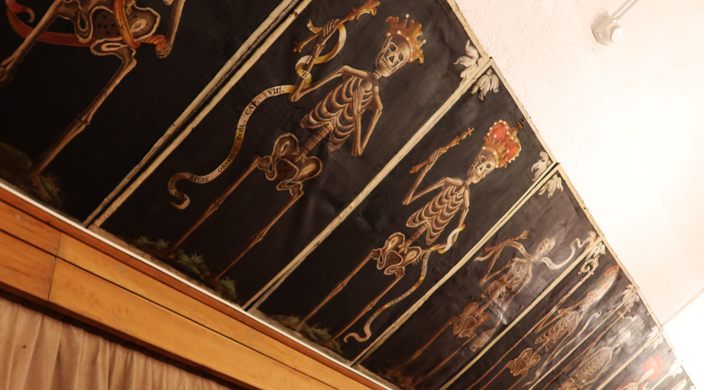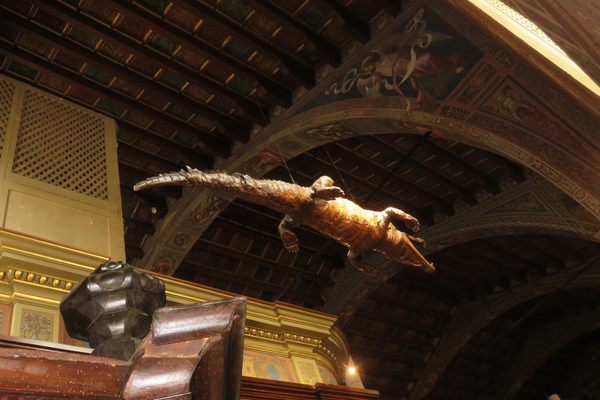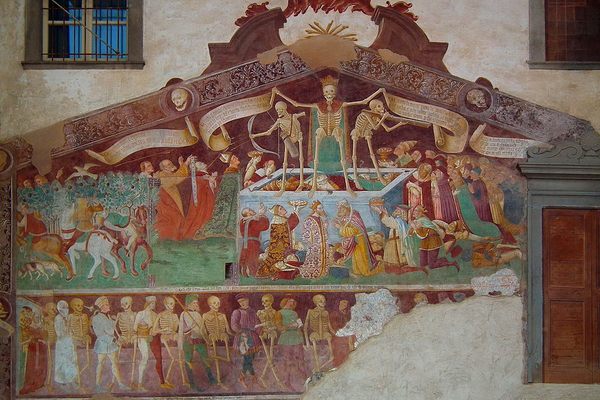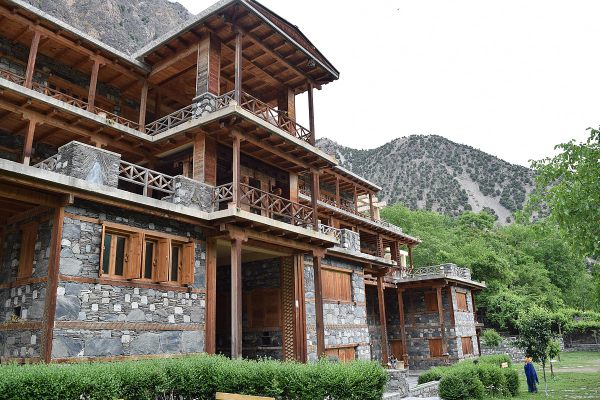Museo della Basilica di Gandino
This museum is home to 22 panes depicting skeletons dressed in colorful garments.
Tucked away in a narrow valley, Gandino is a small mountain village that flourished in the 14th century thanks to the textile industry, which remains the main source of income for a good part of the inhabitants. The fame and wealth that the villagers acquired during the Middle Ages have left their mark in the form of palatial buildings and sumptuous churches that can still be admired to this day.
The Museo della Basilica di Gandino collects and preserves religious objects belonging to the nearby Basilica of Santa Maria Assunta. First opened in 1929, the museum underwent major modifications and expansions in 1963 and in 1988, and it is now located within the walls of the palace where the local vicar lived in the 16th century. In addition to religious objects, the museum is also a repository of textiles from the 15th century to today.
The collection on display can be divided into eight themes. The tapestries are of Flemish origins and date back to the 16th century. The paintings are mainly from the 15th and 16th centuries, including the portrait of every priest that served in Gandino since the 15th century. The vestments section showcases the highest levels of sophistication in the art of weaving. Three hundred items trace the history of lace over the past 600 years. All the wooden statues represent religious figures and were made by famous medieval artists. The treasure room consists of an iron cage protecting artifacts made of silver and gold. There is also a section dedicated to nativity scenes from across the world. The last and perhaps most impressive section is an altar entirely made of silver.
Among all these remarkable items of religious, artistic, and historical significance, a set of 22 panes is particularly eye-catching. These are paintings of stylized skeletons wearing distinctive garments. Painted between 1758 and 1771 by Giovanni Radici, these Macabri can be divided into two sets, one portraying famous figures of the era identifiable by coats of arms, banners, or unique items of clothing, and the other representing common people in their professional attire. These panes were displayed at the nearby basilica during the Triduum of the Dead and were meant to remind the faithful of the transient nature of their existence.
Know Before You Go
Check the museum's official website for opening and closing times.



























Follow us on Twitter to get the latest on the world's hidden wonders.
Like us on Facebook to get the latest on the world's hidden wonders.
Follow us on Twitter Like us on Facebook